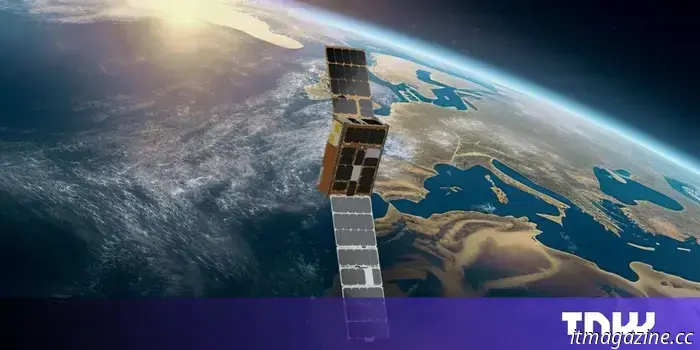
A satellite has recently utilized AI to independently make decisions while in space.
For the first time, a satellite has autonomously determined when and where to capture a scientific image using onboard AI — all within 90 seconds and without any human assistance. This technology, known as Dynamic Targeting, was tested earlier this month by NASA’s Jet Propulsion Laboratory (JPL). It was fitted on a compact satellite, roughly the size of a briefcase, which was created and managed by the UK-based company Open Cosmos, and it included a machine learning processor developed by the Dublin-based company Ubotica.
During the trial, the satellite tilted forward to scan 500km ahead in its orbit and captured a preview image. Ubotica’s AI promptly assessed the image to evaluate cloud coverage. If the skies were clear, the satellite tilted back to take a detailed photo of the ground; if clouds obstructed the view, it skipped the shot, conserving time, storage, and bandwidth. “By intelligently selecting what to photograph, you can prioritize imaging the ground and avoid capturing clouds,” explained Ben Smith from JPL, which funds the Dynamic Targeting initiative. “This technology will enable scientists to obtain a significantly higher percentage of usable data.”
Brian Quinn, Ubotica's chief strategy officer, noted that traditionally, satellites functioned as passive data gatherers, capturing images of whatever was below them and transmitting all that data — regardless of its usefulness — back to Earth. Scientists then needed to sift through mountains of data. “It takes post-processing, often days later, to recognize things like a fire or a harmful algal bloom,” Quinn stated in an article published on NASA’s website earlier this year.
NASA, Ubotica, and Open Cosmos indicate that this system could also be developed further to detect wildfires, volcanic eruptions, and severe storms from space more quickly than ever before. The recent trial builds on earlier collaborations among the three organizations. In 2021, Ubotica showcased real-time AI cloud detection aboard the International Space Station (ISS) as part of a larger research partnership with JPL. Then, in 2024, Open Cosmos launched HAMMER, an AI-driven satellite equipped with a hyperspectral camera and Ubotica's machine learning processor.
Other articles
A satellite has recently utilized AI to independently make decisions while in space.
A satellite has, for the first time, utilized onboard AI to autonomously determine when and where to take a scientific image.
